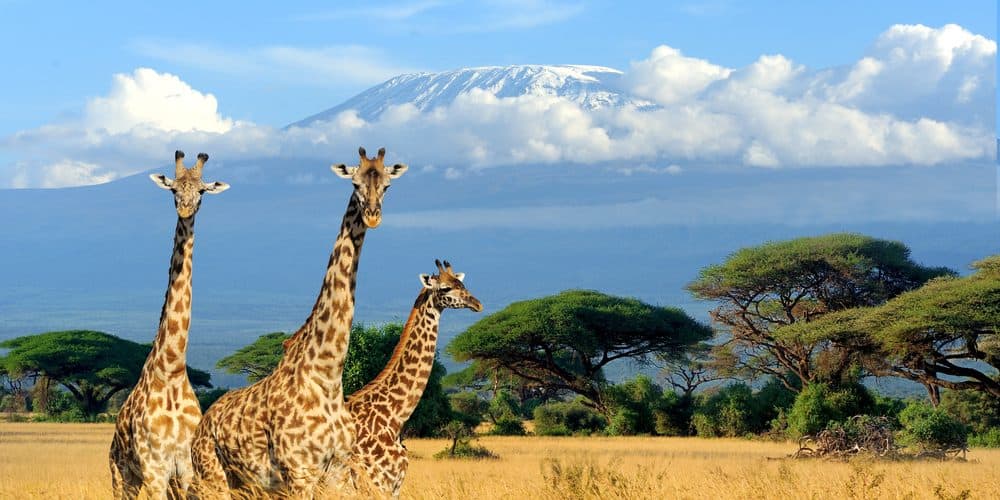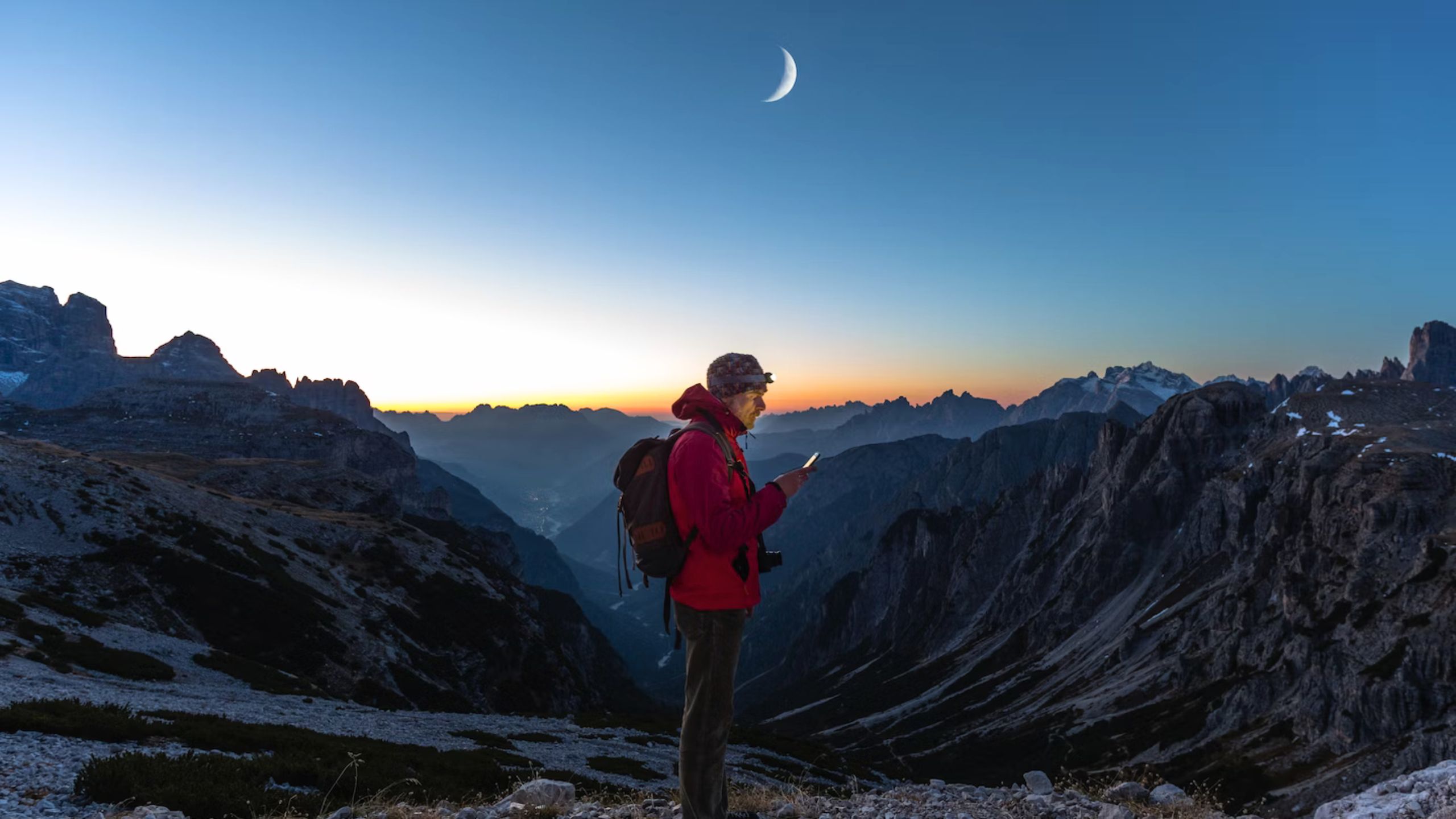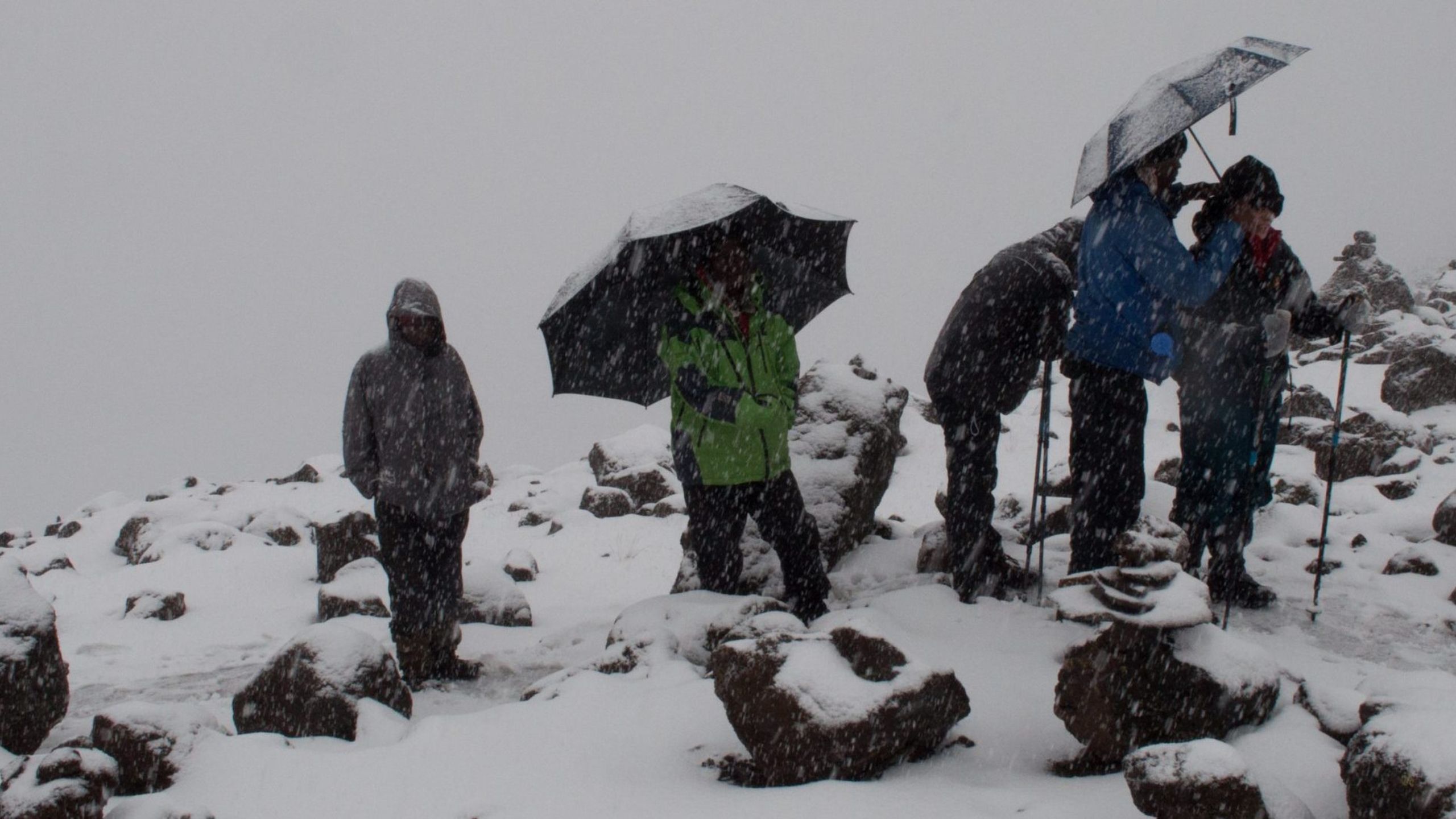“As sure as Kilimanjaro rises like Olympus above the Serengeti.”
You probably recognize the popular lyric from Toto’s 1982 hit song ‘Africa.’ It has single-handedly led many people to believe that Mount Kilimanjaro, the tallest mountain in Africa, can be seen from Serengeti National Park.
However, beautiful photos like the one above which show wildlife with the mountain in the background are taken from Amboseli National Park in Kenya, not the Serengeti.
Amboseli is less than 30 miles away from the peak. Serengeti, on the other hand, is much farther – about 200 miles away.
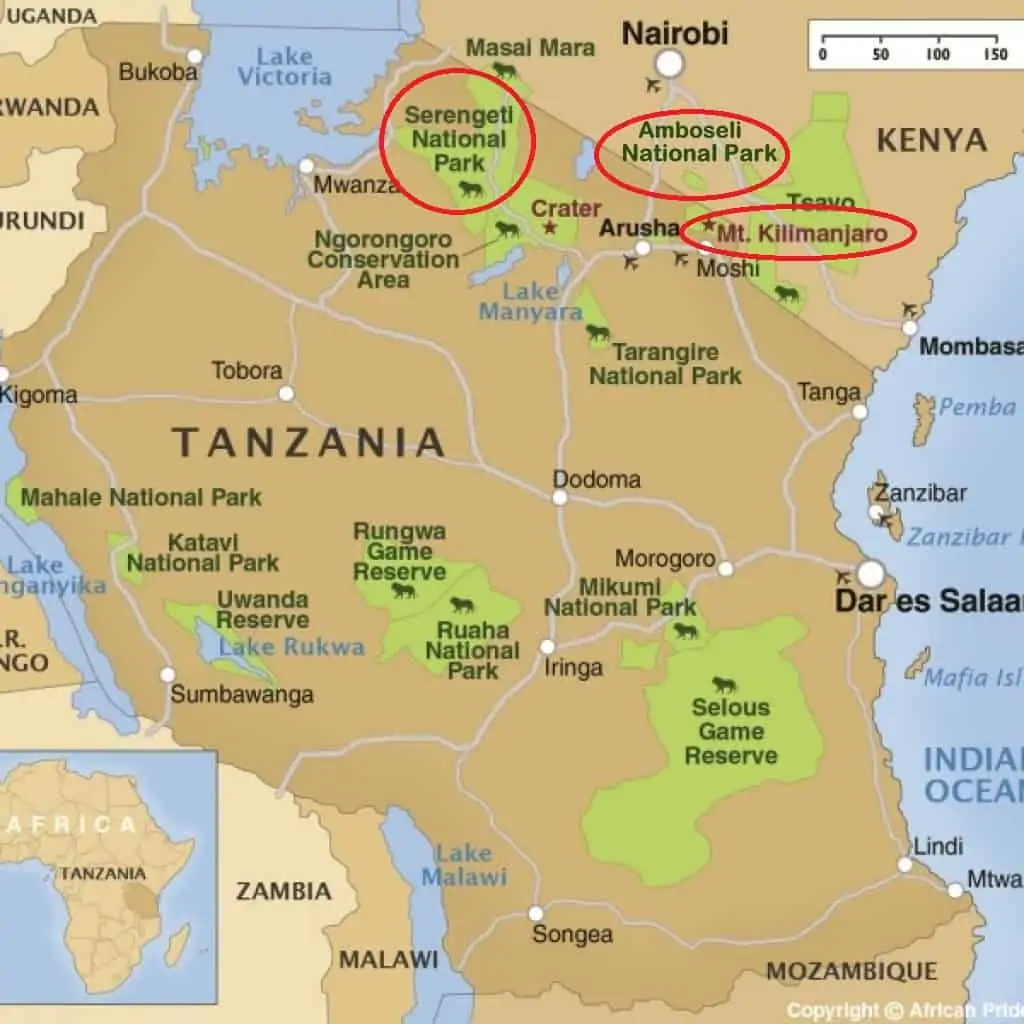
Serengeti National Park is the world’s most popular safari destination.
Mount Kilimanjaro is the tallest mountain in Africa. It is located on the eastern border of Tanzania near Kenya.
How far can the human eye see?
The human eye is amazingly powerful. We can see an almost unlimited distance. The farthest object visible with the naked eye is far in space – the Andromeda galaxy. This galaxy is an astonishing 2.5 million light-years away from Earth. That’s 14,696,563,853,121,026,000 miles!
So if distance between Serengeti and Mount Kilimanjaro is “only” 200 miles, it seems that we would certainly be able to see Mount Kilimanjaro from the Serengeti, right?
Not so fast.
Our visual limitations are often bound by the natural curvature of the Earth. In other words, the Earth itself blocks our sight lines. At sea level, when looking out into the ocean, you can only see three miles out to the horizon.
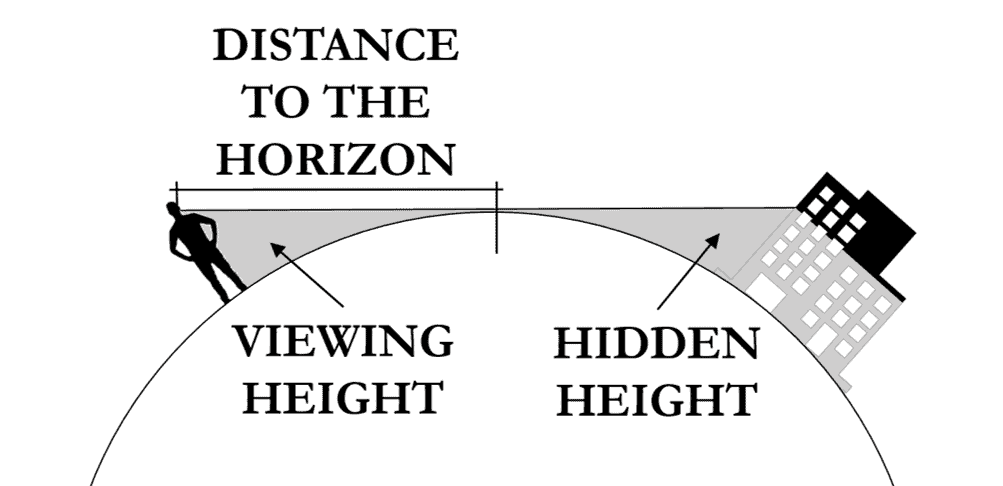
How much does the Earth curve in 200 miles?
Most sources estimate it to be 8 inches per mile. So for every mile of the distance between you and the object, the curvature will obstruct 8 inches of its height.
Therefore, using this calculation, if we were standing at sea level, the Earth’s curvature would obstruct nearly 26,000 feet in height at a distance of 200 miles. We would not be able to see Kilimanjaro which tops out at 19,340 feet.
But the Serengeti is not at sea level. Its elevation varies between 3,020 and 6,070 feet. This changes the viewing angle significantly. At 3,020 feet, the curvature of the Earth only obstructs about 11,740 feet. At 6,070 feet, the obstruction falls to 7,300 feet. Therefore, the curvature of the Earth does not block the sight line from Serengeti to Kilimanjaro from any where inside the park.

Does anything else prevent us from seeing Kilimanjaro?
There is always the geographic lay of the land itself and natural objects such as trees and rock formations. Dust, water vapor, air pollution, and weather also will impede your vision with each additional mile. So even though it is theoretically possible to see Kilimanjaro from the Serengeti, it probably cannot be viewed.
What do our safari guides have to say?
In an unofficial survey we conducted, none have ever seen Kilimanjaro from the Serengeti. And these are professionals whose eyesight is uncanny and have been in the field for decades. Despite our efforts, we could not find any evidence that Kilimanjaro could be seen from anywhere in the Serengeti.

Does Kilimanjaro rise above the Serengeti?
We already know it doesn’t as these two locations are 200 miles apart from each other.
So why does the song state something so blatantly false?
It’s on purpose. Sort of.
One of the songwriters and singers, Jeff Porcaro, explained that the idea for the song came while he was watching television:
At the beginning of the ’80s I watched a late night documentary on TV about all the terrible death and suffering of the people in Africa. It both moved and appalled me, and the pictures just wouldn’t leave my head. I tried to imagine how I’d feel about if I was there and what I’d do.
Porcaro said that the words come from the perspective of “a white boy is trying to write a song on Africa, but since he’s never been there, he can only tell what he’s seen on TV or remembers in the past.”
Therefore, the lyrics are not intended to be accurate. It is written from a perspective of naivety.
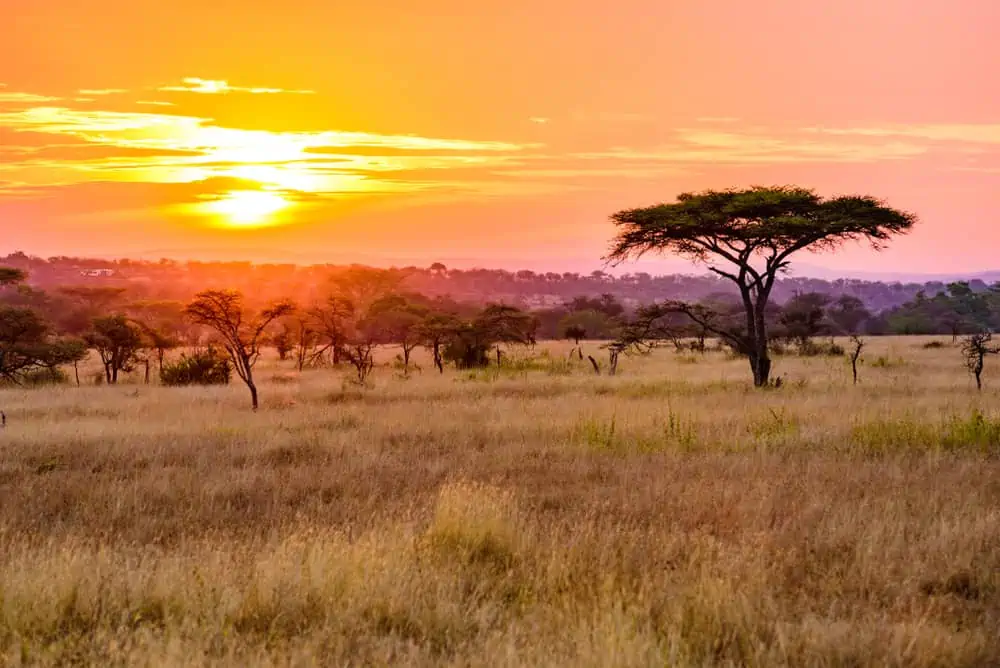
What is the song actually about?
The other songwriter David Paich said:
The chorus came very quickly, but I didn’t have a verse, I had the music. When I sat down and played the chorus, the way you hear it just came out: ‘It’s gonna take a lot to drag me away from you … I bless the rains down in Africa.’ I just stopped for a second. I said, ‘Whoa, whoa, I gotta write this down.‘ It’s different, and I wasn’t sure what it meant at the time.
Paich explained the song is about a man’s love of a continent, Africa, rather than just a personal romance. A person flying in to meet a lonely missionary.

Africa lyrics:
I hear the drums echoing tonight
But she hears only whispers of some quiet conversation
She’s coming in, 12:30 flight
The moonlit wings reflect the stars that guide me towards salvation
I stopped an old man along the way
Hoping to find some old forgotten words or ancient melodies
He turned to me as if to say, “Hurry boy, it’s waiting there for you”
It’s gonna take a lot to drag me away from you
There’s nothing that a hundred men or more could ever do
I bless the rains down in Africa
Gonna take some time to do the things we never had (ooh, ooh)
The wild dogs cry out in the night
As they grow restless, longing for some solitary company
I know that I must do what’s right
As sure as Kilimanjaro rises like Olympus above the Serengeti
I seek to cure what’s deep inside, frightened of this thing that I’ve become
It’s gonna take a lot to drag me away from you
There’s nothing that a hundred men or more could ever do
I bless the rains down in Africa
Gonna take some time to do the things we never had (ooh, ooh)
Hurry boy, she’s waiting there for you
It’s gonna take a lot to drag me away from you
There’s nothing that a hundred men or more could ever do
I bless the rains down in Africa
I bless the rains down in Africa (I bless the rain)
I bless the rains down in Africa (I bless the rain)
I bless the rains down in Africa
I bless the rains down in Africa (ah, gonna take the time)
Gonna take some time to do the things we never had (ooh, ooh)
Fun Facts
From the top of Mount Everest (29,029 feet above sea level), you could see 211 miles in every direction.
The world’s longest theoretical line of sight is from Hindu Tagh, China (21,115 feet) to Dankova, Kyrgyzstan (19,600 feet) – a total distance of 334 miles. However, it has never been proven.

